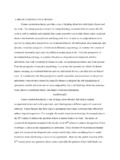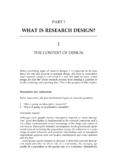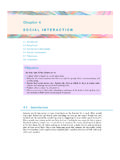Transcription of The Life Design ThemeMapping Guide - Vocopher
1 The life Design ThemeMapping Guide Kevin B. Stoltz and Susan R. Barclay 2 The life Design ThemeMapping Guide Copyright 2015 by Kevin B. Stoltz and Susan R. Barclay This Guide is intended to help assist practitioners with developing skills in hearing, understanding, and constructing narratives with clients. The processes and materials in this manual are suggestions and should not be considered a recipe or formula for success. The processes are to help practitioners develop skills in deconstructing and constructing narratives.
2 Eventually, practitioners will develop the skills necessary and will no longer need to rely on the training materials in this manual. 3 PURPOSE The purpose of this booklet is to provide a Guide for life Design professionals and practitioners as they aid clients in co-constructing, deconstructing, and re-authoring a career and designing a life . This Guide contains coding categories and coding cues to assist practitioners in deconstructing and constructing themes uncovered in the narrative of clients. This Guide provides a method by which practitioners can facilitate and clients can build readiness to re-author their narrative and Design a life .
3 The assumption is that practitioners will be well acquainted with the theory of life Design (Savickas et al., 2009), career construction theory (Savickas, 2011, 2013), the dimensions of career adaptability, and the career construction interview (Savickas, 2011). Being familiar with additional constructs referenced in this Guide is important. For more through discussions of coding categories and cues (Hermans & Hermans-Konopka, 2010; Manaster & Perryman, 1974, 1979; Meier, Bolvin, & Meier, 2008; Singer & Bonalume, 2010; Thorne & McLean, 2001; Winters, Meijers, Harlaar, Strik, Baert, & Kuijpers, 2013) and coding by using innovative moments and proto-narratives (Ribeiro, Bento, Salgado, Stiles, & Gon alves.)
4 2011), we refer users of this Guide to the respective referenced authors. USES Practitioners will find this Guide helpful anytime they are working with clients from a narrative perspective, especially using the career construction interview (CCI). This Guide is useful with emerging adults (18-25), adults, career transitioners, and others struggling with gaining meaning and movement in their careers and lives. The process described within this Guide is useful with individuals, groups, such as the life Design Group (Barclay, Stoltz, & Wolff, 2011; Barclay & Stoltz, 2016a, 2016b), or as a classroom writing assignment, such the Career Narrative Project (Barclay, 2009; Barclay & Wolff, 2012).
5 GENERAL DIRECTIONS This Guide contains several elements important to life Design counseling. Coding Categories/Coding Cues: Coding categories and cues represent elements of identity and adaptability. As clients narrate their story, they will provide clues into aspects of identity and assessment across the adaptability dimensions of concern, control, curiosity, and confidence. Use the coding categories and cues to capture and organize the clients narrative. You might not hear all of the categories, but record those you do verbatim.
6 Although the categories provided in this Guide might be present across the narrative, the categories cannot represent all aspects. Practitioners will consider and add additional categories, as needed, when working with clients. Proto-narratives Proto-narratives represent client experiences that they organize within their narrative. Typically, these contain recurrent content or themes across the narrative (Ribeiro, et al., 2011). Clients will discuss these proto-narratives from one or several positions (frames of reference or worldview), and practitioners will record and summarize these in the space provided at the end of each CCI question coding section.
7 We provide users of this Guide with a description of each of the three proto-narrative positions at the beginning of each CCI question coding section. 4 The Career Construction Interview (CCI) 1. How can I be useful to you as you construct your career? 2. Keeping in mind that the person might be real or fictional, whom do you admire when you were growing up? Tell me about him or her. Follow-up questions/prompts: How are you like this person? How are you unlike this person? 3. What magazine, television shows, or websites do you read, watch, or visit on a regular basis?
8 Follow-up questions/prompts: What do you like about these? What is it that attracts you to these? 4. Tell me about your favorite book or movie. 5. Tell me a favorite saying or motto. Follow-up questions/prompts: Tell me about the significance of this saying for you 6. I am interested in three early recollections about things you recall happening to you when you were approximately six years old or younger. Follow-up questions/prompts: What is the most salient moment in this memory? Describe the emotion you are experiencing in this memory If I were going to publish this memory in tomorrow s newspaper, what would be the title, and please include a verb?
9 GOAL: Developing and applying the new proto-narrative to the client s problem or task. Reference: Savickas, M. L. (2011; 2013) 5 ThemeMapping Reference Pages Coding Cues and Proto-narrative Positions The following few pages contain general coding cue category and proto-narrative position charts for use across the career construction interview (CCI). When listening for themes across the client s narrative, use the following coding cues as a Guide in both understanding the client s narrative and deconstructing the story.
10 The coding cue categories are not exhaustive. Practitioners might identify additional coding categories as the client narrates. In addition to the following general coding category and proto-narrative position charts, users of this Guide will locate coding category and proto-narrative charts specific to each CCI question on the appropriate pages. 6 ThemeMapping Reference Page Coding Cues Coding Cue Causal links Relation between cause and effect Climax Crescendo; apex Completeness How thoroughly does the client relate the story of challenge?













